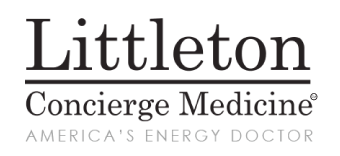Concierge Medicine in the United States: Why a Monumental Shift in Patient Care Is Emerging
Concierge healthcare practices are booming in the US. This model is highly patient-focused, offering convenience, simplicity, and a depth and quality of attentive personal care that has long since fallen by the wayside in traditional office-based, fee-for-service primary care.
Patients aren’t the only ones fed up with the rushed, impersonal, treadmill-like service they receive in a fee-for-service doctor’s office. The doctors don’t like it either.
Doctors Are Shunning Primary Care
Once, becoming a primary care physician or family doctor was a coveted, respected, lucrative career path; today, however, there’s a shortage of primary care doctors that’s approaching crisis levels. According the the US Department of Health and Human Resources, by 2020, our country will be short 20,400 primary care providers.
On the front lines of health maintenance, prevention, and early detection, primary care doctors are an essential part of Americans’ well-being. But already, there are too few available with too little time, and not nearly enough college students are on the primary care career path.
Patients experience many of the side effects of traditional fee-for-service primary healthcare. It takes them weeks to get an appointment, they typically wait about an hour after appointment times to be seen, they spend a whopping 8 to 12 minutes with their doctors, and their doctors don’t know anything about them or their health.
Many patients think doctors like it this way, but generally speaking, that’s not the case at all. They don’t appreciate being stressed and hurried all day long. And they don’t like feeling as if they’re not giving each patient enough attention and the highest possible quality of care.
Why Is Traditional Primary Care Such a Treadmill?
The fee-for-service model is controlled by insurance companies and a system that requires high patient turnover to be profitable. It’s billing-centric, rather than patient-centric. This is driving an unforgiving system that seriously detracts from a primary care doctor’s quality of life in the workplace.
Consider this: To net $150,000 annually, a primary care physician has to generate $350,000 in gross annual billing. That works out to about 25 patients per day. A primary care doctor breaks even at 15 patients per day.
If you’re doing the math, you might think, “Well, that gives doctors a little over half an hour for each patient in an 8-hour day. That’s not so bad. Why does my doctor only give me 10 minutes?”
Obviously, a lot goes on behind the scenes, as at any workplace. Doctors spend a significant chunk of their time outside appointments doing things for which there is no reimbursement under the fee-for-service model.
For example, internist and former CEO of The University of Maryland Medical Center Dr. Stephen Schimpff wrote an article called “Why Do I Only Get 10 Minutes with My Doctor?” In it, he details how, on top of seeing 25 patients per day, the average primary care doctor:
- Takes 24 phone calls
- Responds to 17 emails
- Signs off on 12 prescription refills beyond those filled in appointments
- Looks over 20 lab results
- Reviews 11 X-ray reports
- Reads through 14 reports from specialists
Add to this that some patients take longer than the allotted time, and doctors easily fall behind schedule, since it’s arranged so tightly by necessity. Then, every single appointment requires official documentation be filled out for billing purposes. And what if a doctor needs to do a little thinking and research to get someone a good diagnosis or treatment plan? Then, doctors deal with an exceptional amount of emotional stress over the course of the day; sometimes, like any other human beings, they need to take a few minutes to breathe.
None of this extra stuff is scheduled into a day that must be filled with 25 patient visits.
In Contrast: Concierge Medicine
Concierge medicine relies on what are essentially membership fees from patients. This eliminates the pressure to churn through countless patients as quickly as possible. As a result, the doctor’s schedule allows for an otherwise unheard-of flexibility and amount of time for appointments. From the doctor’s point of view, it’s a much less stressful, overwhelming way to work, and it allows focus on the right priorities: developing strong doctor-patient relationships and delivering the highest quality care.



